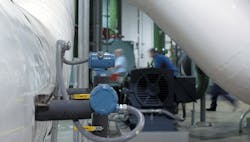Factors that impact power supply and wiring design for startup testing
A Control Design reader writes: What type of power supplies and wiring practices are best for unit-undertest (UUT) sensors to measure pressure, temperature or force?
Answers
Switch mode and star configuration
There are several factors to consider when selecting a power supply for unit-under test (UUT) sensors for measuring pressure, temperature or force. Switch mode power supplies are used for most modern electronic devices, including sensors, because they are compact, lightweight and highly efficient.
The factors that are most important to selecting the right switch mode power supply are filtering, power rating, operating method, features, form factor, life expectancy, safety standards, wiring practices and isolation.
For power filtering, you’ll want a power supply that has less than 150 mVp-p ripple to provide good clean power to the sensor for testing. This helps eliminate any variables in power delivery that could affect test results. When it comes to selecting the right power rating, you want to make sure the power supply can provide at least 1.2 times the total load that will be required for testing.
There are a few operating methods to consider depending on which factor is most important to you. Do you need more current, voltage or higher reliability? Parallel operating mode will prioritize current, while series mode will prioritize voltage, and redundant systems/backup will increase reliability.
Switch mode power supplies come with many additional features that may be important during testing. Features such as overcurrent protection, overvoltage protection and alarm output to notify you when the power supply detects under-voltage. If the UUT test is automated, you may want to consider a power supply with Ethernet connectivity so you can monitor voltage during the test.
Next, you’ll need to decide on the form factor for the power supply that best fits your test environment. Power supplies come in many different shapes and mounting methods like DIN rail or panel mount. Things you’ll need to keep in mind are the mounting direction, space requirements and airflow to ensure reliable operation without overheating.
The life expectancy of a power supply is important to consider as you’ll want consistent performance over time to avoid additional variables with testing. It’s always best to consider the manufacturer’s warranty along with life expectancy and compare that against how long you intend to use the power supply. Lastly, make sure the power supply complies with the relevant safety standards in your industry or region.
Wiring practices are equally as important as selecting the right power supply for testing. Star wiring topography is the concept that should be used for wiring up the power supply. This means all loads should be wired back to the power supply through a terminal block, and ground should be connected in a star configuration.
Avoid daisy-chaining the connections and make sure to use a suitable wire gauge for the load current, as well as keeping wires to the minimum necessary length. For the grounding wires, you’ll want them as thick and as short as possible.
When it comes to isolation, make sure to route the sensor away from noisy loads like motors or solenoids. This means don’t route the sensor wire with ac power leads and don’t connect any noisy loads to the same power supply as the sensor. If the application calls for it, you can add an input filter to help filter out noise. One last thing, make sure to separate input lines from output lines during the wiring process.
A few final notes, make sure to maintain ambient temperature for the rated power supply, as well as keeping sufficient space around the power supply to lessen heat generation. Monitor the vibration levels to keep them within spec based on the power supplies specification. Keep foreign matter and dust away from the power supply during maintenance and perform periodic inspections.
Following these basic principles will help you select and configure the right power supply to perform a unit-under test (UUT) for sensors.
Matthew Mohr / product manager / Omron Automation Americas / www.automation.omron.com/en/us/
Modern vs. old-fashioned
While convenient, modern switched mode power supplies can emit unnecessary noise and cause disturbances in analog signals for UUT sensors and equipment. Some old-fashioned constant power source devices offer outputs with reduced noise. The best wiring practices include using shielded cabling or twisted pairs when potentially exposed to noise.
Jason Schmid / product manager for interface / Wago / www.wago.com
Dedicated testing instruments
In regard to what types of instruments and wiring should be done when a customer is doing a start-up test on their process:
- One common practice is to leave the instruments installed and use them for monitoring and/or control once the process is up and running in normal operation. If this is the case, you would want to use normal wiring practices and tie the instruments back to the control system or PLC to access the measurements (Figure 1).
- An alternative method is to use dedicated testing instruments to monitor the required pressures and temperatures when the processing unit is undergoing the UUT. Once the test is complete, the instruments are removed from service and installed on the next unit that needs to be tested. Wireless devices have a major advantage for this type of scenario in that they are self-powered and do not need wiring, so they are much easier to install and uninstall. Oftentimes a wireless gateway may be used as part of the setup to facilitate the gathering of the required process measurements. This installation practice is somewhat common in scenarios like UUT, internal auditing and other situations where you only need to make measurements on a unit for a temporary period of time compared to 24x7x365.
Michael Olivier / director of product management, Rosemount Temperature / Emerson / www.emerson.com
About the Author
Anna Townshend
Managing Editor
Anna Townshend has been a writer and journalist for 20 years. Previously, she was the editor of Marina Dock Age and International Dredging Review, until she joined Endeavor Business Media in June 2020. She is the managing editor of Control Design and Plant Services.

Leaders relevant to this article:


